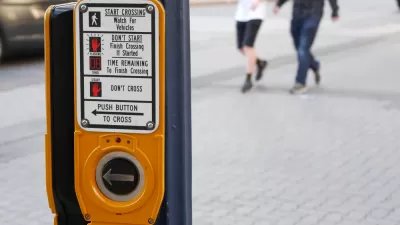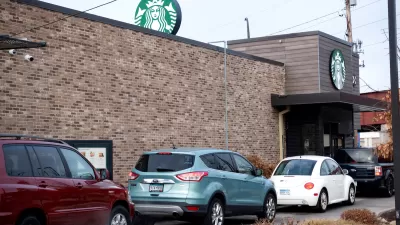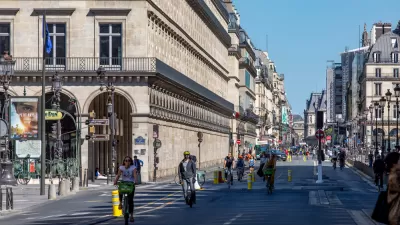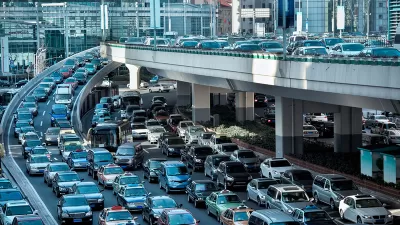Another day, another historic planning-related bill signed into law in the Golden State.

In 2021, California Governor Gavin Newsom vetoed a bill, AB 1238, that would have decriminalized jaywalking in the state, in a major setback for the cause of making streets safer for noon-vehicular modes of transportation.
In 2022, Gov. Newsom signed a similar bill—AB 2147, also known as “The Freedom to Walk Act,” authored by the same state legislator, Assembly Member Phil Ting (D-San Francisco). The law takes effect of January 1, 2023.
Colleenn Shalby reports on the new law for the Los Angeles Times:
Under the new law, pedestrians would be able to legally cross the street outside of designated intersections without the threat of a hefty citation “unless a reasonably careful person would realize there is an immediate danger of collision with a moving vehicle or other device moving exclusively by human power.”
Shalby notes that jaywalking laws grew out of auto industry lobbying in the early 20th century—one of the most obvious signs of the growing car-centric planning and automobile dependence that continues to dominate the American built environment.
Data shows that jaywalking laws in the 21st century have disparate impacts for low-income individuals and people of color. “Data cited by Ting’s office from the California Racial and Identity Profiling Act shows that Black Californians are up to 4.5 times more likely to be stopped for jaywalking than those who are white,” writes Shaby.
The governor’s signature on AB 2147 follows shortly after the ink dried on two other historically significant planning reforms: AB 2097, which remove parking requirements near transit stops, and AB 2011, which made affordable housing developments on commercially zoned properties legal by right.
FULL STORY: Jaywalking is decriminalized in California under new law

Americans May Be Stuck — But Why?
Americans are moving a lot less than they once did, and that is a problem. While Yoni Applebaum, in his highly-publicized article Stuck, gets the reasons badly wrong, it's still important to ask: why are we moving so much less than before?

Using Old Oil and Gas Wells for Green Energy Storage
Penn State researchers have found that repurposing abandoned oil and gas wells for geothermal-assisted compressed-air energy storage can boost efficiency, reduce environmental risks, and support clean energy and job transitions.

Placekeeping: Setting a New Precedent for City Planners
How a preservation-based approach to redevelopment and urban design can prevent displacement and honor legacy communities.

San Francisco’s Muni Ridership Grew in 2024
The system saw its highest ridership since before the Covid-19 pandemic, but faces a severe budget shortage in the coming year.

Colorado Lawmakers Move to Protect BRT Funding
In the face of potential federal funding cuts, CDOT leaders reasserted their commitment to planned bus rapid transit projects.

Safe Streets Funding in Jeopardy
The Trump administration is specifically targeting bike infrastructure and other road safety projects in its funding cuts.
Urban Design for Planners 1: Software Tools
This six-course series explores essential urban design concepts using open source software and equips planners with the tools they need to participate fully in the urban design process.
Planning for Universal Design
Learn the tools for implementing Universal Design in planning regulations.
Heyer Gruel & Associates PA
City of Moreno Valley
Institute for Housing and Urban Development Studies (IHS)
City of Grandview
Harvard GSD Executive Education
Salt Lake City
NYU Wagner Graduate School of Public Service
City of Cambridge, Maryland





























